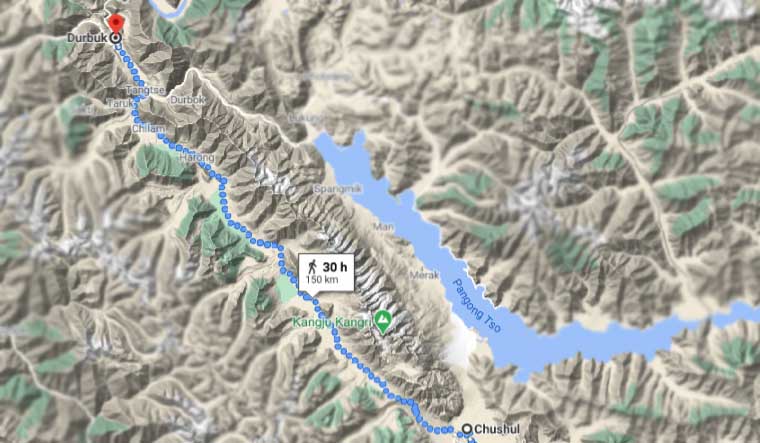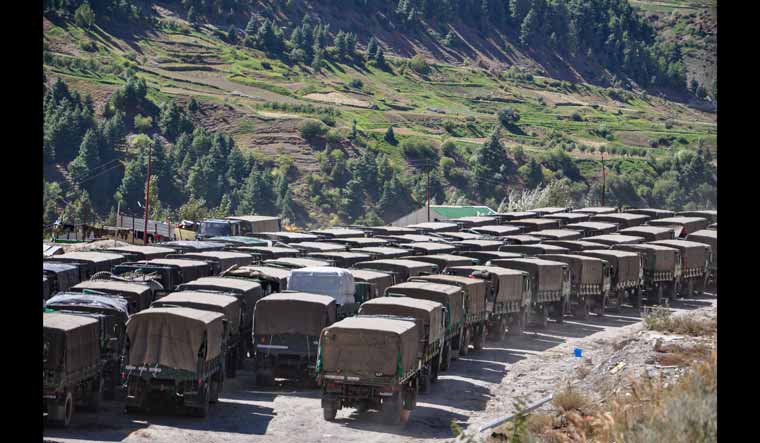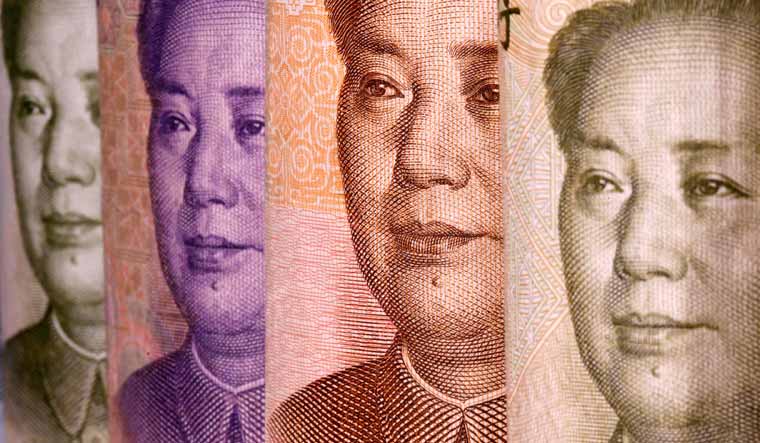2020 is the year of the Rats according to the Chinese Zodiac. As the year pans out, it appears that the world will associate 2020 with China for being more than just a Chinese Rat year. China has shown unprecedented aggressive intent in trade, diplomacy as well as in military assertion and territorial claims across its borders—stretching from the South China Sea to Aksai Chin.
In the India-China context, it is instructive to understand how China perceived India in the 1960s by recalling what a Chinese official told Brig J.P. Dalvi who was then in their custody, on November 21, 1962: “India and China have been friends for thousands of years. It is the reactionary Indian Government that was bent on war. So the Chinese counterattacked and liberated all our territories in NEFA and Ladakh, in just one month. Now we have decided to go back as we do not want to settle the border problem by force. We have proved that you are no match for mighty China.”
In the Chinese scheme of things, even after six decades, their outlook towards India remains unaltered. Simply put, the Chinese believes that as a military rival to them, India should never cross the threshold of being just an ‘irritant’ and in economic and diplomatic terms, India should perpetually remain just an aspirant to be a regional player. The ease with which China could manipulate South Asian dynamics and India’s own divisive internal politics made things easy for China.
But, recent events such as the unprecedented Indian military response to Pakistan, the Citizens Amendment Act (CAA), abrogation of Articles 370 and 35A and newfound confidence in dealing with incidents along the Line of Actual Control (LAC) seem to have made China a bit uneasy. A new impetus to India’s border infrastructure along the LAC was also discernible to China.
All these put together, India seemed to be gradually but steadily building up some potential to pose a threat to strategic Chinese lines of communication opposite Ladakh, apart from adopting a change in its approach. In other words, from the Chinese point of view, India was pushing the ‘permissible threshold’ and as the year of the Rat arrived, China saw a tailor-made opportunity to secure its interests and put the irritant neighbour in its ‘proper’ place. Eastern Ladakh offered time tested, low cost-high return ‘Salami Slicing’ options.
Through the summer months of June, July and August 2020 things moved exactly and swiftly as per the Chinese script. The disproportionate causalities suffered by Chinese troops in the scuffle on the night of June 15 was unexpected but were brushed aside. China may have been pleasantly surprised to see sections within India working harder than their own Global Times to dispute the Chinese losses. Following exactly the same pattern that it did in the Depsang Plains in 2013, China continued to display disdain and violated border management agreements between the two countries one after the other and physically occupied areas disputed by it along the northern bank of Pangong Tso (Tso means lake).
The apparent helplessness and embarrassment caused through these cunning acts and deceit by China were far more damaging to India than the actual militarily insignificant and tactically nonviable positions gained by the Chinese along the northern banks of the lake.
 The distance between Chushul and the village of Durbuk | Google Maps
The distance between Chushul and the village of Durbuk | Google Maps
China was sitting pretty when, in the last days of August 2020, the Indian Army sprang a surprise. By all accounts, Indian troops had preempted the Chinese in occupying tactically dominating heights on the ridgeline running along the southern bank of Pangong Lake. These features are on the Indian side of the LAC and apart from effectively closing a possible opening for Chinese intrusion into Ladakh; it also overlooks and dominates Chinese positions in the ‘fingers’ area along the northern bank of Pangong Lake as well as Chinese deployment and movements astride Spanggur Lake.
Through these unprecedented, but perfectly legitimate actions on its own side of the LAC, India has negated the low cost-high return options which China had been exploiting relentlessly in the Pangong Lake area. Equally significant was India displaying a clear departure from its historically established ‘submissive’ response pattern.
In sum, today China clearly finds itself in a position of disadvantage at the Pangong lake area and has been compelled to react, which by itself is a rare occurrence. What is to be seen now is how will the Chinese reaction manifest?
One possibility is that the current situation of shadow play continues and both sides hold on to their positions. Although such a situation is possible, it would tantamount to a big loss of face for China and a victory of sorts for India. It would also place India in a better position tactically in the Pangong sector. Winters will pose major challenges to both sides. But, as far as the Indian Army is concerned, our troops have remained deployed at even higher altitudes and under much worse weather conditions on the Siachen Glazier, living in normal arctic tents with ice walls providing protection from blizzards and supplies coming through airdrops. The Kargil war is another testimony to the capability of Indian troops to operate at higher altitudes.
 An army convoy carrying military material on its way to Ladakh amid border tension with China, at Manali-Leh highway, Saturday, Sept. 19, 2020 | PTI
An army convoy carrying military material on its way to Ladakh amid border tension with China, at Manali-Leh highway, Saturday, Sept. 19, 2020 | PTI
An agreement wherein both sides revert to pre-April 2020 positions is another possibility. Although on the face of it, this may seem to be a high probability that both sides would accept this, it would actually be a big loss of face for China and is also unlikely to be acceptable for India. Considering the unreliable and untrustworthy track record of China and its scant respect for agreements, if the advantageous positions on the ridgeline are vacated by our troops, India expects the Chinese to rush for the vacated locations at the earliest opportunity, even before the next summer sets in.
The possibility of the situation flaring up into a localised conflict also cannot be ruled out. However, considering the unique nature of warfare in mountains and the fact that both sides have formidable forces deployed in the area, a local conflict is unlikely to result in any worthwhile territorial gain or loss for either side. In the eventuality of such a localised conflict, it is also well known that the much-touted Chinese infrastructure in terms of habitat along the LAC, being purely peacetime infrastructure, will be of little use and may actually prove to be a liability in the eventuality of hostilities. In the Depsang Plains, about 300km to the north of the Pangong area by road, however, China does enjoy some advantages.
In addition, the Pakistan factor can be kept at an insignificant level.
What about an all-out war? China enjoys a clear advantage over India when it comes to Comprehensive National Power (CNP) and a classical all-out war will theoretically afford China the opportunity to bring to bear the full complement of its CNP against India. It would entail total mobilisation of its armed forces over a period of few months, activating the entire border including the Central sector, Lipulekh, Doklam, Arunachal border, etc and even the Pakistan front. Such preparations cannot be hidden from international scrutiny. Also, in today’s context, an all-out war between these two countries will cast a severe adverse shadow well beyond the India-China borders into the international arena and will spill into domains such as the oceans, international trade, cyber, space and so on—impacting the whole world.
Even if the two countries want it, the world cannot permit such a confrontation.
So, if an India-China conflict breaks out and it remains a local skirmish, India will find itself in a position to effectively counter it. If on the other hand, it expands beyond a local skirmish or at any stage if India finds that things could get out of control, the conflict can be expanded by striking targets in the hinterland, disrupting sea lanes of communications and carrying the conflict well beyond the India-China borders in order to give a compelling reason for the world at large and other anti-China forces, in particular, to come into play.
Going beyond the India-China border, the writing is on the wall—the Dragon’s muscle-flexing has only commenced. While on the one hand, China closely shields its domestic fault lines through ruthless autocratic governance presided over by its all-powerful dictator, on the other hand, it is relentlessly exploiting the liberal democratic systems of democracies around the world and also the liberal and generous structures of global democratic institutions such as the UN, WTO, etc as an effective tool in the pursuit of undisputed global hegemony.
The year of the Rat has reiterated the urgent need for the world to counter China. Potential fault lines within China such as Xinjiang, Inner Mongolia, Hong Kong, and the state’s interference in every facet of a citizen’s life and the power structure within the CPC itself all offer real possibilities to be exploited. Maybe, India can show the way.
The author is former deputy chief of Army.



